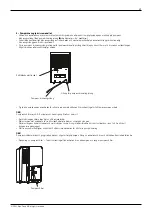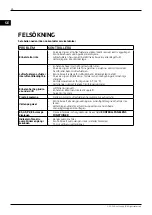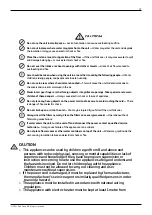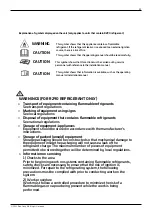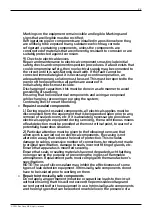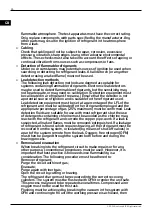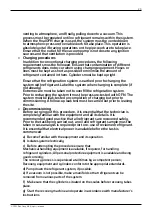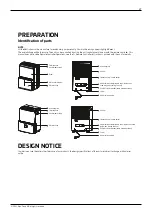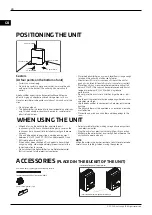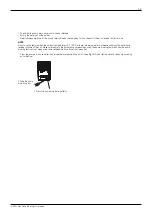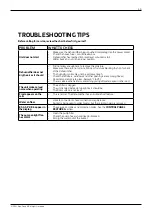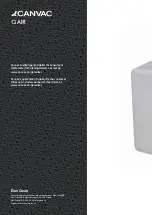
35
© 2021, Elon Group AB. All rights reserved.
venting to atmosphere, and finally pulling down to a vacuum. This
process must be repeated until no refrigerant remains within the system.
When the final OFN charge is used, the system must be vented down
to atmospheric pressure to enable work to take place. This operation is
absolutely vital if brazing operations on the pipe-work are to take place.
Ensure that the outlet for the vacuum pump is not close to any ignition
sources and that ventilation is provided.
• Charging procedures
In addition to conventional charging procedures, the following
requirements must be followed. Ensure that contamination of different
refrigerants does not occur when using charging equipment. Hoses or
lines must be kept as short as possible to minimize the amount of
refrigerant contained in them. Cylinders must be kept upright.
Ensure that the refrigeration system is earthed prior to charging the
system with refrigerant. Label the system when charging is complete (if
not already).
Extreme care must be taken not to overfill the refrigeration system.
Prior to recharging the system it must be pressure-tested with OFN. The
system must be leak-tested on completion of charging but prior to
commissioning. A follow-up leak test must be carried out prior to leaving
the site.
• Decommissioning
Before carrying out this procedure, it is essential that the technician is
completely familiar with the equipment and all its details. It is
recommended good practice that all refrigerants are recovered safely.
Prior to the task being carried out, an oil and refrigerant sample must be
taken in case analysis is required prior to re-use of reclaimed refrigerant.
It is essential that electrical power is available before the task is
commenced.
a) Become familiar with the equipment and its operation.
b) Isolate system electrically.
c) Before attempting the procedure ensure that:
Mechanical handling equipment is available, if required, for handling
refrigerant cylinders; All personal protective equipment is available and being
used correctly;
The recovery process is supervised at all times by a competent person;
Recovery equipment and cylinders conform to the appropriate standards.
d) Pump down the refrigerant system, if possible.
e) If a vacuum is not possible, make a manifold so that refrigerant can be
removed from various parts of the system.
f) Make sure that the cylinder is situated on the scales before recovery takes
place.
g) Start the recovery machine and operate in accordance with manufacturer’s
instructions.

